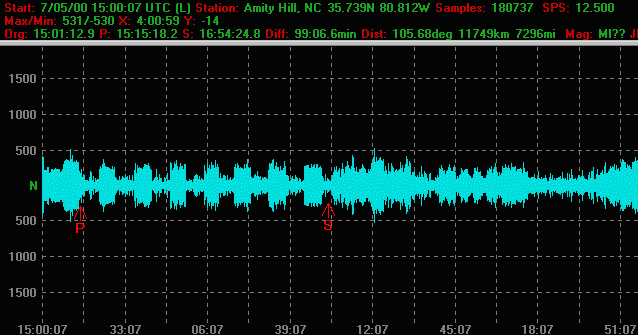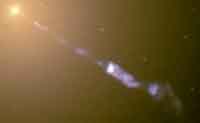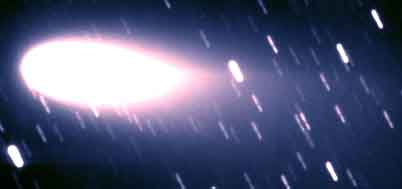TIME GATE ELF ANOMOLIES
ANOMALOUS CONTINUOUS WORLDWIDE PULSES
WITH THANKS TO KENT STEADMAN
In the main Alpha-Omega Time Gate of 1996, the secret society military was behind with using the Time Gate by external time travel, as we have relayed in our public audiences, and hinted at in one of the last articles of the Time Gate page.
This time in Time Gate 2000 these societies appear to be well into the swing of things. A series of anomolous pulses on the ELF range have appeared as the Time Gtae 2000 commenced, and continue worldwide continously.
Not only this, but as shown on another page, they are emanating from the cyclotron particle accelerater at Brookhaven National Laboritories, next to the Mantauk base where the secret Phoenix Time Travel projects commenced, after the Philadelphia experiment. In fact they have a Project Phoenix today, as relayed on their web site, a picture of which you can find on the Galactic Crossing page. The cycltrons work together in resonance, this is a very lengthy subject, which numerous of my audiences have been well exposed to.
In July 1996, a the Haarp of Alaska and the EISCAT of Norway, tried to log into the Time Gate 96, by phase-conjugating these two devices, into a temporal shift. One result may have been affected in the TWA 800 flight. Ghost ships of the USS Eldridge, fromt he Philadelphia experiment, were spotted on the Atlantic at the time. Now there are Haarp anomolie signals on, in full swing, as you can view in a separate page. These affect biology
Here then follow the evidential results by the ELFRAD GROUP, who use the Earth as a parabolic ELF wave antenna. Someone is sending psychoactive, biologically affecting, 2.7 hz ELF waves globally, during this Time Gate. So you Time Nauts and Somanauts it is time to be Compassionate Extra-Temporal Warriors, we will be met Midway by the Interuniversal humanity for every coherent compassionate time travelling dedication work we do. Someone is using this temporal resonance, let us too, for ALL of humanity, as a Cup that Overfloweth.
--Ananda, July 7, 2000
Date: 7/2/00 6:33:15 PM Pacific Daylight Time
"I just returned to the lab location. I have no idea what is happening,
however there has been almost CONTINOUS pulsing with a frequency of
2.5 to 2.8 hertz for the past several days. This has been detected and recorded
not only at this site but also in Italy, and Australia. The time frame is
the same in all cases. These pulses have been occurring every 15 minutes
with a duration of 4.5 minutes. Whatever the cause, it is global."
--Charlie Plyler Elfrad Group
Here is a data file taken starting at 00:00:07 07/03 UTC for a duration of 3 1/2 hours. This clearly shows the pulses which are occurring every 15 minutes. The center frequency is 2.7 hertz.
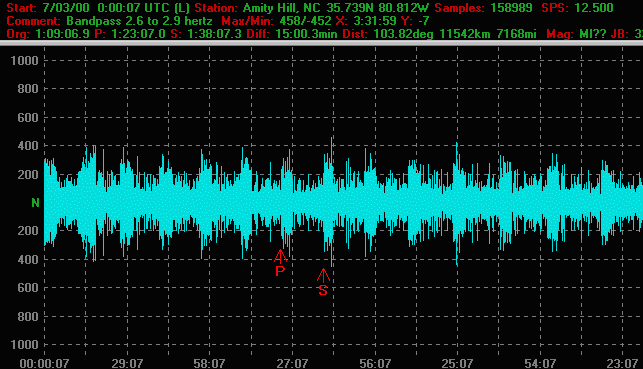
Date: 7/3/00 8:23:08 AM Pacific Daylight Time
Just captured this from screen on data collector. Something's going down. Further analysis shortly. Charlie
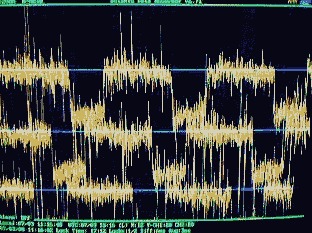
Signal consists of pulse code modulation.Very complex. Decode anyone?
ICQ MESSAGES
Square wave signal stopped at 16:43 UT. Faded out rather that stopping
abruptly. A signal at 3.175 hertz was riding the carrier. That sure blows
the Nyquist theory to pieces. Simply stated: Low
frequency modulation has to have a high frequency carrier in order to carry
intelligence. (This signal had a high freq riding on a low freq
carrier).
Interesting.....Looking at earth data, something else unusual is
coming in. Check the ecam. Looks like intense radiation of some sort. Whew......coming
in hot!

COMMENTS
Date: 7/3/00 11:27:56 AM Pacific Daylight Time
If the transmissions are coded and military as I expect they are, I would not expect anybody to be able to break them. For one thing you need a lot of bits to attempt decryption by brute-force. The number of bits per second you can send on a 2.5 hz channel is fractional. Second, if military, they have the world's best cipher experts. They would be changing to a different predetermined encryption key at some set interval.
Here's my guess as to what these transmissions are: US military to long-duration-underwater submarines. The transmissions would be new sets of detailed contingency plans. There is nothing happening immediately, but something in the strategic/tactical situation has changed, requiring a new set of plans be put in place. When it's time to actually execute the plans, the instructions would be short and simple: "Plan A".
Where there's smoke there's fire. This is just smoke. We should be looking for the fire. Worry-Wart
7/3/00 12:38:56 PM Pacific Daylight Time
The Elfrad screen shot looks like 6-step PWM (Pulse Width Modulation) rather than PCM. The 6-step technique is commonly used to generate a variable frequency simulated sine-wave. There appears to be more than one phase present.
If it is polyphase power transmission you'd except the frequency to remain fairly constant. If it is FSK, DTMF or some other modulation, you'd expect to see the frequency vary (unless it's in a test pattern). It'd be very helpful if a larger sample and more detail were available.
Date: 7/3/00 3:24:50 PM Pacific Daylight Time
Current receiving what sounds like a harmonic to Charlie's signal at 2.7 Mhz.
Location :Houston
Antenna is tuned long wire on east/west axis.
7/3/00 4:22:06 PM Pacific Daylight Time
Remember the power inverter thread needed to work the gear under GIZA? Like a shield system? Check these references:
UPDATE ELFRAD
Date: 7/5/00 12:17:44 PM Pacific Daylight Time
From: cplyler@elfrad.com (Charlie)
We have been asked if the signals are still continuing. Yes, with a vengeance. The signal bursts are frequency sweeping from 2.2 hertz to 2.7 hertz. Am enclosing a graph showing a four hour duration starting at 15:00 UT 07/05/00. The bursts inside the red pointers consist of a signal at 3.3 hertz. The bursts after this point are slightly lower in frequency. Charlie Plyler, Elfrad Group
